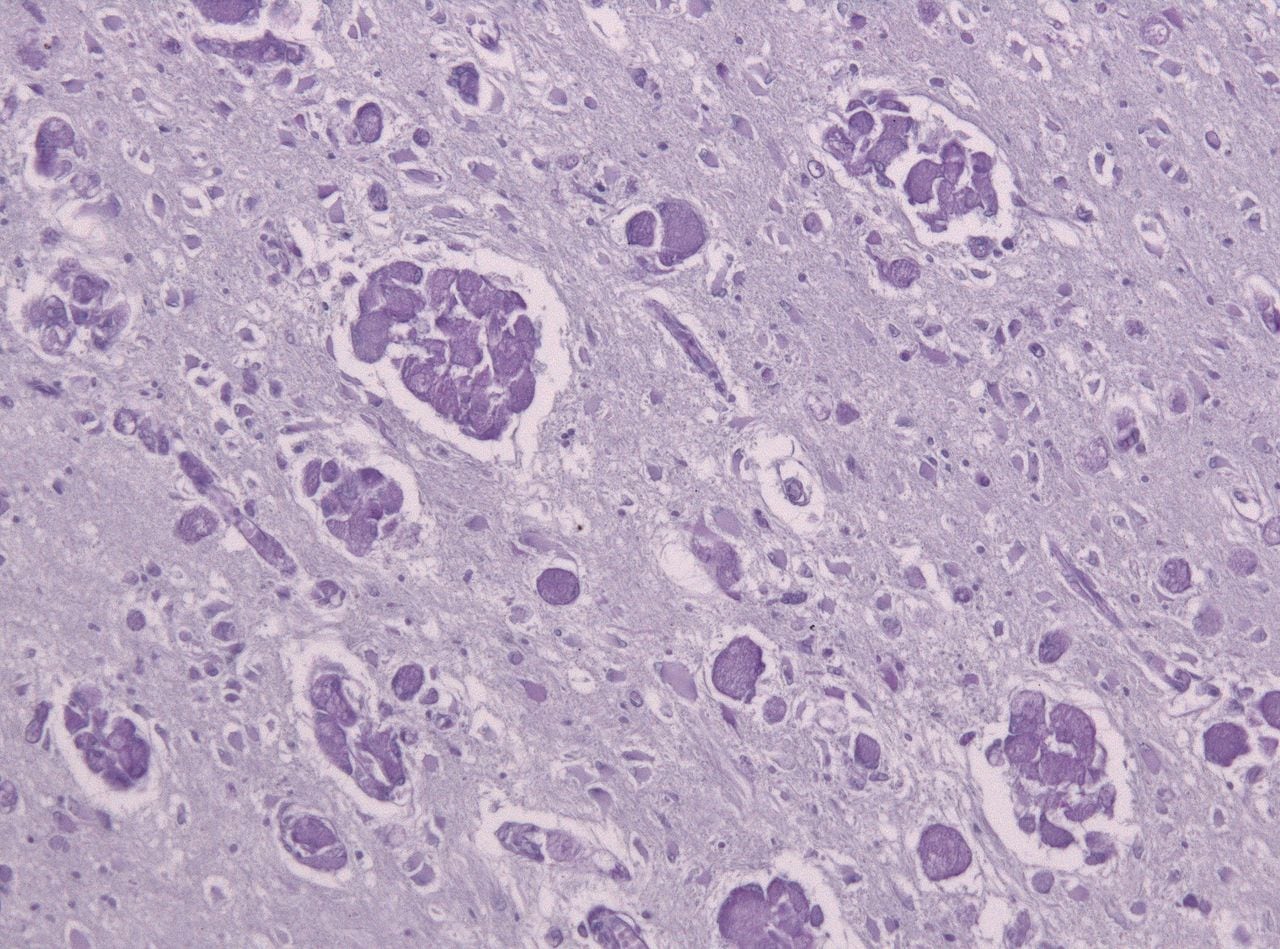Lysosomal storage disorders
They are characterized by deficiencies of specific lysosomal enzymes that lead to inhibition of breakdown of the enzyme substrates causing them to accumulate in the lysosomes. All lysosomal storage disorders are AR except Fabry’s disease which is X-linked. Following types are seen:
Lysosomal storage disorders
Gaucher’s disease
Accumulation of glucocerebrosides
Most common LSD
Hepatosplenomegaly, osteoporosis, rarely CNS involvement, pancytopenia
Treat with enzyme replacement therapy
“Crumpled tissue paper” cytoplasm of macrophages called Gaucher cells
Tay Sachs disease
Accumulation of GM2 gangliosides
Rapid, progressive, fatal neurodegeneration
Blindness
Muscular weakness, seizures
Cherry red spot on the macula
Onion skinning of lysosomes
No hepatosplenomegaly
Krabbe Disease (Globoid cell leukodystrophy)
Accumulation of galactocerebrosides
Mental and motor retardation
Blindness, deafness, loss of myelin
Globoid bodies (glycolipid laden macrophages) seen in the white matter of the brain
Metachromatic Leukodystrophy
Accumulation of sulfatides
Demyelination, cognitive deterioration, ataxia
Progressive paralysis, infantile dementia
Nerves stain yellow-brown with crystal violet
Niemann-Pick Disease
Accumulation of sphingomyelin
Hepatosplenomegaly
Type A shows neurodegeneration
Cherry red macula, lipid laden foam cells
Fabry’s Disease
Accumulation of globosides
Only X linked LSD.
Red-purple skin rash, angiokeratomas
Renal and heart failure
Burning pain in lower extremities


